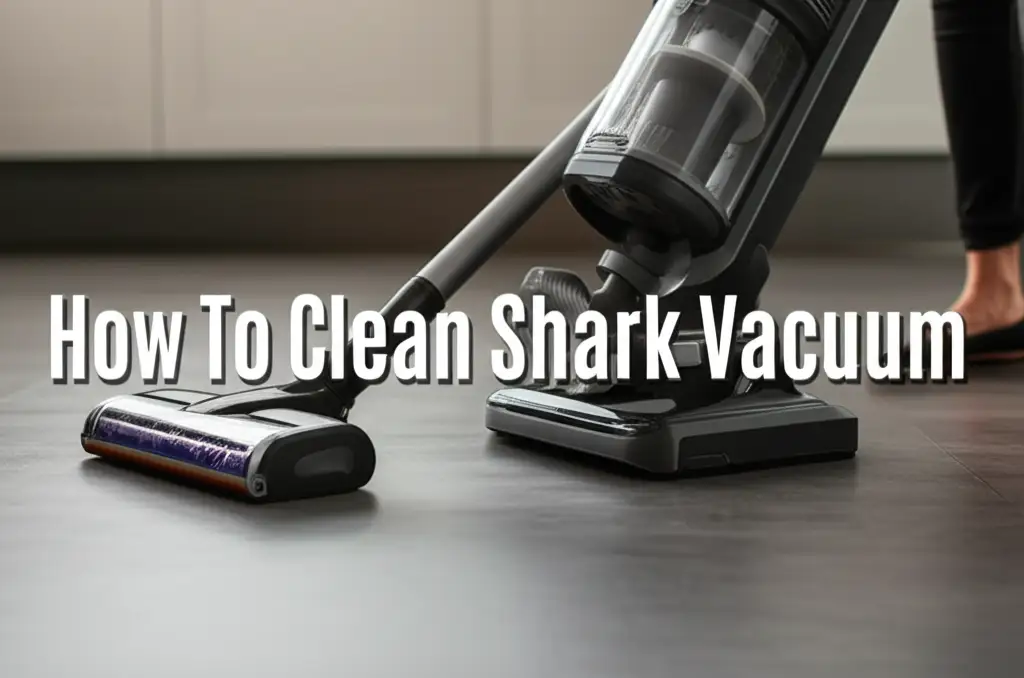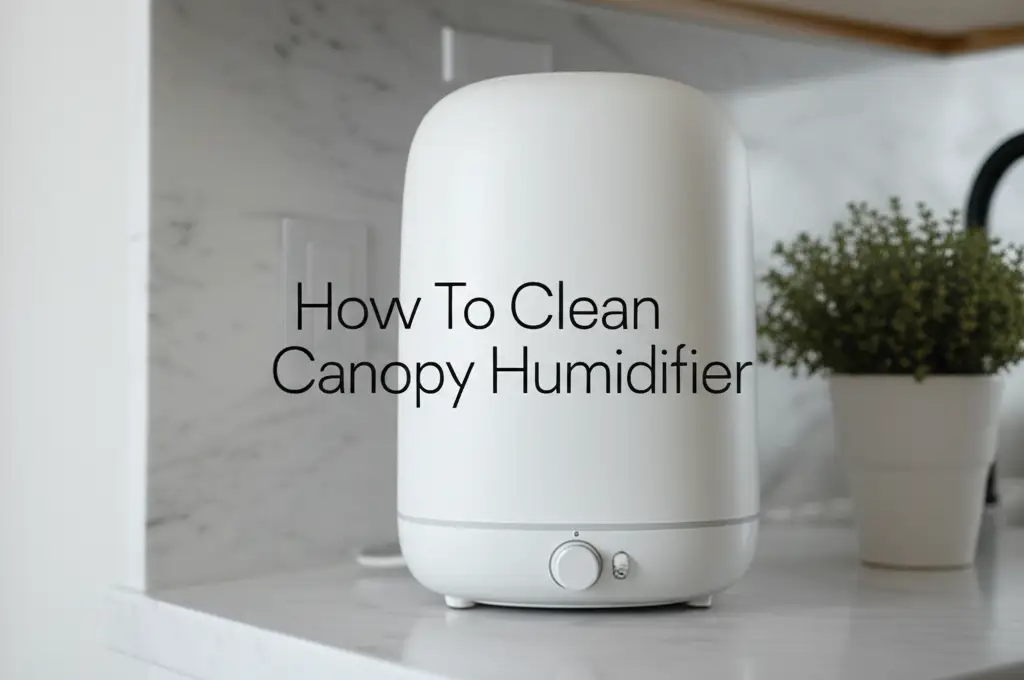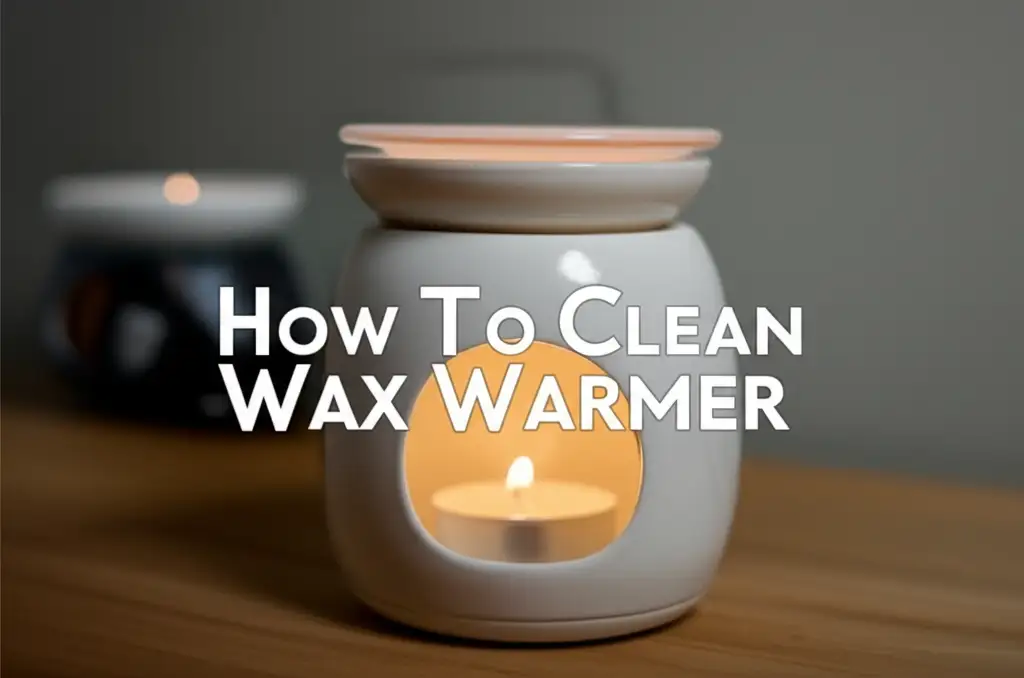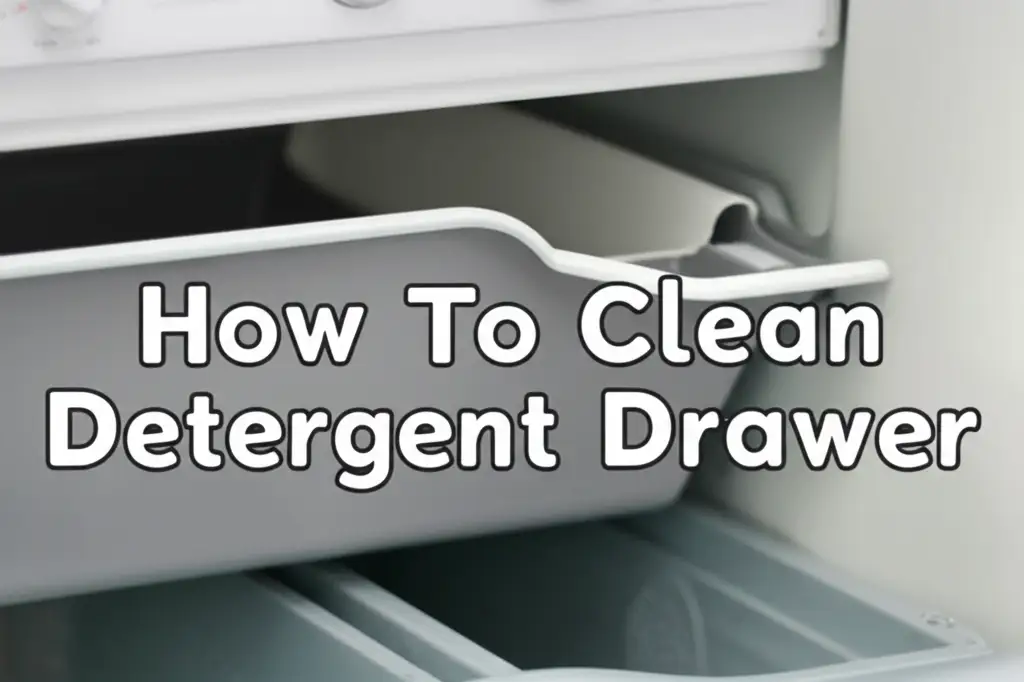· Home Cleaning · 13 min read
How To Clean Rainbow Vacuum
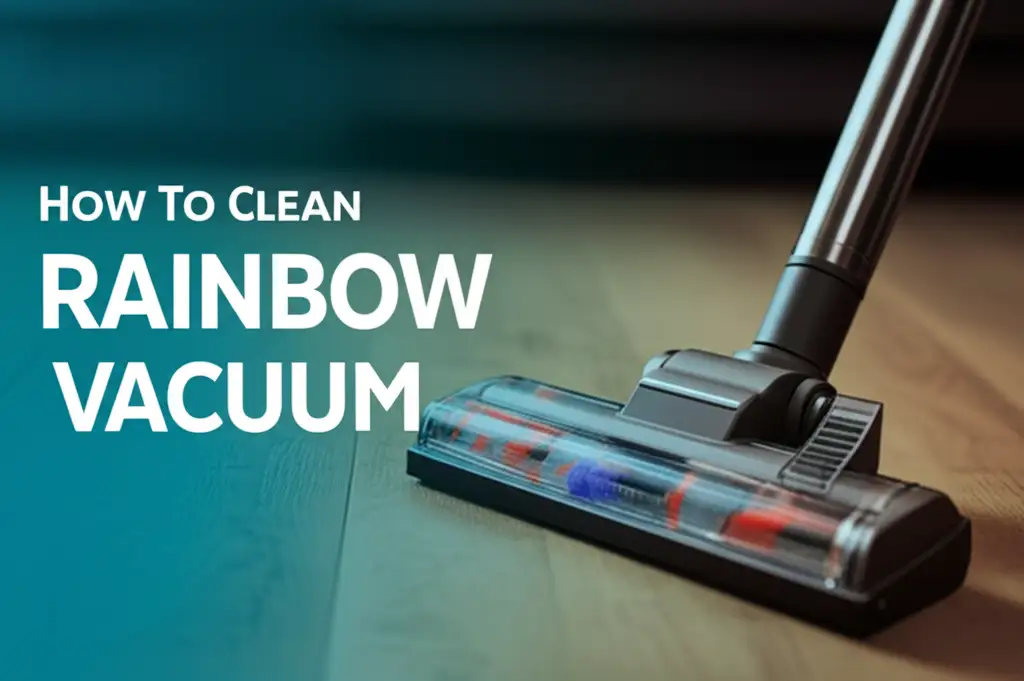
Clean Your Rainbow Vacuum: A Comprehensive Guide
Cleaning your home feels wonderful, especially when your tools work perfectly. If you own a Rainbow vacuum, you know its unique water filtration system captures dirt and allergens effectively. This system makes it a powerful cleaning machine. However, the same water that traps dust also requires regular cleaning to keep your vacuum running smoothly and smelling fresh. Ignoring this can lead to diminished performance, bad odors, and even component damage over time.
I remember when my Rainbow vacuum started losing suction; I quickly realized it was time for a thorough cleaning. This guide will help you understand how to clean a Rainbow vacuum completely. We will cover everything from daily maintenance to deep cleaning the water basin, separator, hose, attachments, and even motor area. By following these simple steps, you can ensure your Rainbow vacuum stays efficient and extends its lifespan for many years of sparkling clean floors.
Takeaway:
- Empty and rinse the water basin after every use to prevent odor and mildew.
- Regularly deep clean the separator and water basin to maintain suction power.
- Clean the hose and attachments to prevent clogs and ensure air flow.
- Check and clean the HEPA filter and motor area cautiously for best air quality.
- Follow a consistent cleaning schedule for lasting vacuum performance.
To clean a Rainbow vacuum, first empty and rinse the water basin after each use. Next, detach and wash the separator. Periodically deep clean the hose, attachments, and check the HEPA filter. This prevents odors, maintains suction, and ensures efficient dirt and allergen removal.
Understanding Your Rainbow Vacuum’s Unique Design
The Rainbow vacuum operates differently from typical vacuums. It uses water to trap dirt, dust, and allergens. Air goes into the water basin, pulling debris into the water. This water acts as a filter, capturing particles that other vacuums might release back into the air. This design makes the Rainbow vacuum excellent for people with allergies or asthma.
The water-based filtration system requires special cleaning attention. Unlike bag or bagless vacuums, where you just empty a canister or replace a bag, the Rainbow’s effectiveness relies on clean water and clean internal components. Dirty water, combined with trapped dust and debris, can quickly become a breeding ground for mold and bacteria if not addressed. This leads to unpleasant odors and reduced cleaning power. Keeping the system clean is key to enjoying all its benefits.
Daily Maintenance for Your Rainbow Vacuum
Daily care is simple yet very important for your Rainbow vacuum. After each cleaning session, the dirty water in the basin holds all the collected grime. Leaving this water inside can lead to mildew growth and bad smells. It also affects the vacuum’s performance next time you use it. Taking a few minutes to clean the water basin after each use will save you much more time later.
Emptying the Water Basin
Emptying the water basin is the first step. Carefully remove the basin from the main unit. Walk it over to a toilet or utility sink. Pour out the dirty water slowly. You will see how much dirt and debris the vacuum collected.
Rinsing the Water Basin
After emptying, rinse the basin thoroughly with clean, cool water. Swish the water around to dislodge any remaining dirt. You might need to use a soft brush or sponge to wipe down the inside surfaces. Make sure to get rid of all residue. Let the basin air dry completely before reassembling or storing. This prevents mildew and odors. This simple step keeps your Rainbow vacuum ready for its next job and maintains its peak efficiency, much like how important it is to keep other vacuum filters clean for optimal performance. You can find general tips on maintaining filters here: How To Clean Dyson Vacuum Filter.
Deep Cleaning the Water Basin and Separator
While daily rinsing is good, your Rainbow vacuum needs a deeper clean periodically. The separator is the crucial part that spins rapidly, mixing air and water to trap debris. Over time, hair, dust, and other particles can accumulate on the separator blades and in the water basin. This buildup reduces the vacuum’s efficiency and can cause it to smell. A thorough cleaning ensures optimal performance.
Cleaning the Separator
The separator is located directly above the water basin. It detaches easily from the main motor unit. Once detached, take it to a sink. Rinse it under running water to remove loose debris. For stubborn dirt or grime, use a soft brush or an old toothbrush. Gently scrub the blades and the center shaft. Ensure no hair or strings remain tangled on the separator. These can prevent it from spinning freely. Rinse until all parts are clean.
Deep Cleaning the Water Basin
Even with daily rinsing, the water basin can develop a film or stubborn residue. Fill the basin with warm water and a few drops of mild dish soap. Let it sit for about 10-15 minutes. This helps loosen any caked-on dirt. Use a non-abrasive sponge or cloth to scrub the inside surfaces. Pay attention to corners and edges where grime might hide. Rinse the basin several times with clean water until no soap residue remains. Make sure it is completely dry before putting it back on the vacuum. This deep cleaning keeps your Rainbow vacuum performing its best. It will also help prevent issues like those seen when vacuums lose suction due to debris, similar to issues with other vacuum types like the Dyson Animal Vacuum.
Cleaning Your Rainbow Vacuum’s Hose and Attachments
The hose and attachments of your Rainbow vacuum are vital for reaching all areas. They collect dirt, dust, and sometimes even larger debris. Over time, these can accumulate inside, leading to clogs. A clogged hose reduces suction significantly. Dirty attachments can also transfer grime back onto clean surfaces. Regular cleaning keeps these parts clear and ready for use.
Clearing the Hose
If you notice a drop in suction, a clogged hose might be the problem. First, detach the hose from the main unit and the power nozzle. Look through both ends of the hose for visible blockages. You might use a broom handle or a long, flexible brush to push through any clogs. For deeper cleaning, you can rinse the hose. Run warm water through it from one end to the other. You can add a small amount of mild detergent. Hang the hose vertically to drain completely and air dry. Ensure it is completely dry before reattaching it to prevent mildew. Drying can take 24-48 hours.
Washing Attachments
Your Rainbow vacuum comes with various attachments like the floor tool, dusting brush, and crevice tool. These can get quite dirty. For most plastic attachments, simply wash them in warm, soapy water. Use a small brush to clean inside crevices and bristles. Rinse them thoroughly. Let them air dry completely on a clean towel. For attachments with bristles, make sure to remove any tangled hair or lint. This keeps your tools effective. Proper cleaning of these tools is as important as cleaning the main vacuum head for any model, like the Dyson Vacuum Head. Keeping all parts clean ensures your Rainbow vacuum performs its best for every cleaning task.
Motor and Filter Care for Long-Lasting Performance
The motor unit is the heart of your Rainbow vacuum. It houses the powerful motor and often a HEPA filter. While the water basin captures most debris, fine particles can still reach the motor area. Proper care here ensures the motor runs efficiently and the air leaving the vacuum is truly clean. This also extends the overall life of your machine.
Cleaning the Exterior of the Motor Unit
The main motor unit should not be submerged in water. Instead, use a damp cloth to wipe down the exterior. Remove any dust or spills. You can use a mild, all-purpose cleaner if needed, but avoid harsh chemicals. Ensure the cloth is only damp, not dripping wet. Moisture near electrical components can cause damage. After wiping, dry the exterior thoroughly with a clean, dry cloth. This simple step keeps your vacuum looking good and prevents dust buildup on the outer casing.
Maintaining the HEPA Filter
Many Rainbow models include a post-motor HEPA filter. This filter captures any microscopic particles that might escape the water filtration system. Check your user manual for the specific location and maintenance instructions for your model’s HEPA filter. Some HEPA filters are washable, while others are not. If washable, rinse it under cool water until the water runs clear. Let it air dry completely, which can take up to 24-48 hours. If the filter is not washable, you may need to tap it gently against a hard surface to dislodge dust. Replace non-washable HEPA filters according to the manufacturer’s recommendations, usually every 1-3 years depending on usage. Proper filter care is essential for maintaining air quality and suction power. This is similar to how vital filter cleaning is for a Shark Vacuum Filter Cordless system.
Troubleshooting Common Cleaning Issues
Even with regular cleaning, you might encounter minor issues with your Rainbow vacuum. Understanding how to troubleshoot these problems can save you time and ensure your vacuum always performs well. Common concerns include reduced suction, strange odors, or unusual noises. Most of these issues relate back to cleaning or proper assembly.
Addressing Reduced Suction
If your Rainbow vacuum loses suction, the first thing to check is the water basin. Ensure it has the correct water level. Too little water might not trap dirt effectively. Too much water can prevent proper air flow. Next, check for clogs. Inspect the hose, attachments, and power nozzle for any blockages. Hair, string, or large debris can get stuck. Also, confirm the separator is clean and spins freely. A dirty or tangled separator cannot create the necessary air-water vortex. Finally, check that all parts are correctly assembled and sealed. A loose connection can cause air leaks, reducing suction.
Eliminating Odors
A common complaint for water-based vacuums is odor. This usually means mildew or bacteria buildup in the water basin or separator. Ensure you empty and rinse the water basin after every single use. Also, make sure all parts, especially the basin and separator, dry completely before storing the vacuum. If odors persist, a deeper clean is needed. Use a mild disinfectant or a solution of white vinegar and water in the basin during cleaning. Let it soak, then rinse thoroughly. Ensure the hose is completely dry inside, as trapped moisture can also cause smells. For persistent smells, you might need to leave the water basin and separator disassembled and airing out for a full day. Some users add a few drops of Rainbow’s specially formulated air freshener to the water during use to combat odors and leave a fresh scent.
Regular Cleaning Schedule for Optimal Rainbow Vacuum Use
Developing a consistent cleaning schedule for your Rainbow vacuum is important. This ensures it always operates at peak efficiency. It also prevents small issues from becoming bigger, more expensive problems. A well-maintained vacuum lasts longer and cleans better. Think of it as preventative care for a valuable appliance.
After Every Use
- Empty and Rinse Water Basin: This is the most crucial step. Never leave dirty water in the basin.
- Rinse Separator: Give the separator a quick rinse under running water to remove loose debris.
Weekly (or Bi-Weekly, Depending on Usage)
- Deep Clean Water Basin: Scrub the basin with mild soap and water.
- Deep Clean Separator: Remove, rinse thoroughly, and scrub the separator. Ensure all hair and debris are gone.
- Check Hose and Attachments: Look for clogs in the hose. Quickly wipe down attachments.
Monthly (or Quarterly, Depending on Usage)
- Thorough Hose Cleaning: If needed, run water through the hose and allow it to dry completely.
- Wash All Attachments: Give all your tools a good wash and air dry.
- Wipe Down Motor Unit Exterior: Clean the outside of the main unit.
- Check HEPA Filter: Inspect the HEPA filter. Clean if washable, or note if replacement is needed soon.
Following this schedule helps maintain the air quality in your home and protects your investment in the Rainbow vacuum. Consistent care prevents dirt and odor buildup, ensuring every cleaning session is effective. Proper maintenance for your Rainbow vacuum is similar to keeping other vacuum types clean for peak function, such as knowing how to clean a Shark vacuum or even a Bissell vacuum.
FAQ Section
How often should I clean my Rainbow vacuum?
You should empty and rinse the water basin and separator after every single use. A deeper clean, including scrubbing the basin and separator, should happen weekly or bi-weekly depending on how often you use the vacuum. Complete cleaning of the hose and attachments is good to do monthly or quarterly.
Can I use soap in my Rainbow vacuum water basin?
No, you should not add soap to the water basin during operation. The only exception is Rainbow’s specially formulated scents. For cleaning the basin after use, you can use a few drops of mild dish soap and warm water to scrub it out. Always rinse thoroughly afterward.
What if my Rainbow vacuum smells bad after cleaning?
A bad smell usually means mold or mildew from trapped moisture. Ensure all parts, especially the water basin and separator, are completely dry before storage. A deep clean with a mild disinfectant or vinegar solution, followed by thorough rinsing and air drying, typically removes odors.
How do I clean the HEPA filter on my Rainbow?
First, check your Rainbow vacuum’s manual. Some HEPA filters are washable; you can rinse them under cool water until clear and air dry completely. Others are not washable and require replacement. Always let washable filters dry fully for 24-48 hours before reinstalling.
Can I submerge parts of my Rainbow vacuum in water?
You can submerge the water basin, separator, hose, and non-electrical attachments in water for cleaning. Never submerge the main motor unit or any electrical components in water. Always ensure all cleaned parts are completely dry before reassembling or storing the vacuum.
What tools do I need to clean my Rainbow vacuum?
You will need a soft brush or old toothbrush, a sponge or cleaning cloth, mild dish soap, and clean water. For thorough drying, a clean towel or drying rack is helpful. You might also want a long, flexible brush or broom handle to clear hose clogs.
Conclusion
Keeping your Rainbow vacuum clean is not just about appearances. It is about maintaining its powerful performance and extending its life. By regularly cleaning the water basin, separator, hose, and attachments, you ensure your vacuum traps dirt and allergens effectively. This prevents odors, maintains suction, and protects your investment. A clean Rainbow vacuum provides a healthier, cleaner home environment.
I have found that a little consistent effort goes a long way. Make it a habit to empty and rinse the basin after every use. Schedule those deeper cleaning sessions for the separator and hose. Your Rainbow vacuum will thank you with years of reliable service. Embrace these simple cleaning steps. You will enjoy fresh air and spotless floors with your well-maintained Rainbow vacuum.
- Rainbow vacuum
- vacuum cleaning
- home cleaning tips
- appliance maintenance
- deep clean

